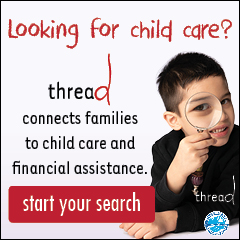
Raising a charitable child
Helping your child reap the rewards of helping others
Story by Mara Severin
When 8-year-old Sagen Cottrell saw the news coverage of the devastating earthquake and tsunami in Japan, his immediate impulse was to help. He wanted to send blankets, but when that proved logistically impossible, he decided to send a different kind of warmth.
“He said, ‘Why don’t we write them letters to let them know we’re here and listening and watching,’ ” recalls his mom Grayce. “He said, ‘I want them to know we’re thinking about them.’ ”
And from a small seed grew a veritable giving tree. Sagen got his school involved. Grayce helped e-mail other schools and wrote a letter to the editor of the local newspaper. Soon, she was running all over town to pick up letters and drawings from schools, home-schoolers, music teachers and grandmothers. “The whole community came out,” she says. Sagen named the program “Alaskan Kids Sharing Smiles” and with help from the Salvation Army, they sent thousands of messages of hope to the people of Japan.
“Don’t underestimate the amazing power children can have in impacting their communities,” says Kelly Hurd, development director at Cook Inlet Tribal Council. “Their hearts are so pure. They’re not jaded. They’re driven by emotion and by the compelling human need they see around themselves. It’s really powerful and I’ve seen it time and time again.”
So how can you encourage your child to find their powerful inner philanthropist?
Remember that there are many ways to give
First of all, don’t be discouraged if your very young child doesn’t found their own non-profit organization. In fact, many young kids may even seem distressingly stingy. “Before age 3 or 4, most kids are primarily focused on their own needs,” says Larry Michael, a former child psychologist for the Anchorage School District. “It isn’t until they start to develop language that they become socially aware of other people.” Your beginning lessons in giving should start small with simple sharing and turn-taking. “You have to be clear,” he says. “You can say, ‘There are other kids. They like the things you do. You have something they don’t. You have to share.’ ” It may be a very basic concept, he says, but having your child think of the world outside of himself is a very big developmental step forward.
From sharing and taking turns, encourage other kinds of good deeds inside the home. Doing chores, helping their siblings, caring for pets, and using good manners are all ways of giving, says Larry. “Giving time and affection is a very important form of generosity and one that should be acknowledged,” says Larry.
Community contributions
As your children get older, help them find opportunities to contribute to the community at large. Bring food to a local food bank. Sign up for a fundraising walk or jog. Send care-packages to troops stationed overseas. Sort through out-grown clothes and toys to donate to children in need. “When I need my kids to lighten their load, the kids specifically choose things they think other kids would like,” says Anchorage mom Amber Michael (no relation to Larry). “Then it becomes infectious and they practically give everything away.”
Celebrate giving!
A great way to encourage the giving spirit in a child is to associate it with a celebration. Paloma Urciuoli requested toys for a homeless shelter instead of herself to mark a recent birthday. “After the party I took her with me to make the delivery,” says Angela. “She hadn’t been there before. Even before she got out of the car, she could sense the different reality these other kids faced. It was a real eye-opener for her and she’s never forgotten it.”
After Matthew Gold’s son Henry had his bar mitzvah ceremony, all his family and friends piled into buses to spend an afternoon doing volunteer service before the party. “They went to a public school in need and organized the library, painted the auditorium, and planted flowers outside,” recalls Matthew. “It’s a good way to keep things in perspective.”
“Kids will sometimes ask for animal treats, toys and other things on our donation list for their birthday, instead of presents,” says Brooke Taylor of the Anchorage Animal Care and Control Center. “Then the birthday kid brings them in to donate to the animals. I’m always so impressed when this happens.”
Make giving a tradition – one that your children will bring into adulthood. Carly Horton Stuart grew up doing the Salvation Army’s Angel Tree with her family. Through this outreach program, a family sponsors a child of designated age and gender, buying gifts and clothing for delivery by the charity. “It’s a habit that stuck,” she says, “because now my husband and I do it every Christmas!”
While parents are usually the teachers in the house, keep yourself open to what your children can teach you, just like young Sage reaching out to the tsunami victims. “So often, kids are the impetus,” says Kelly. “They end up inspiring their parents and soon they’re fundraising or volunteering as a family. From there, they often get the support of the community around them,” she says. “It’s pretty inspiring when you see it all in action.”
“Compassion,” says Kelly, “can be so infectious.”










